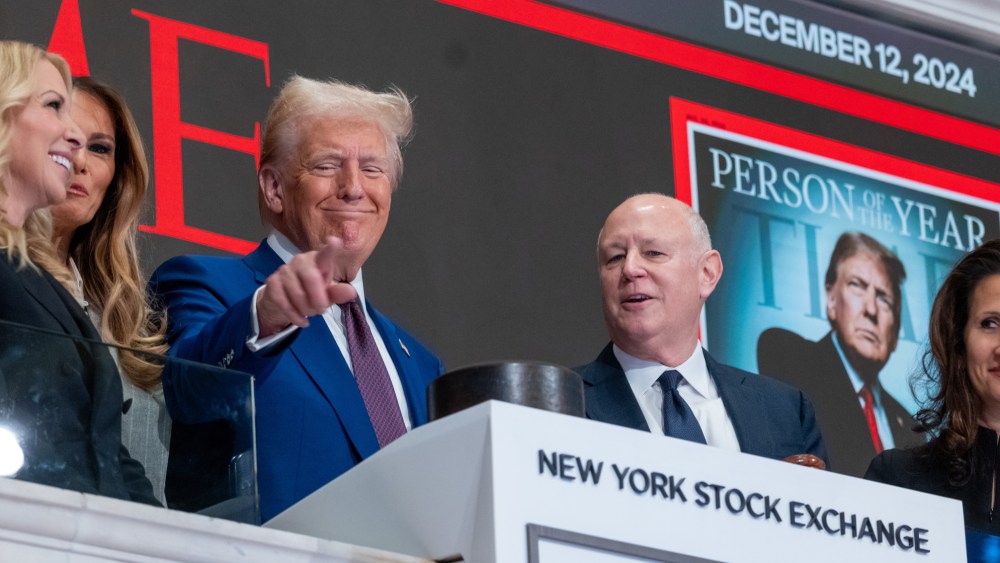
Donald Trump is coming in hot — but it’s not clear who will get burned when he is sworn in again as president this month.
Backed by Republican majorities in both the House and the Senate, Trump is returning to office with fewer constraints than last time. And by all accounts, he’s more ready to depart from Washington norms than he was first time through in 2016.
The result is a 2025 on the edge, with the potential for sweeping change bubbling up just about everywhere.
For starters, Trump, a self-described “Tariff Man,” is ready to once again push for trade wars as a ready solution to many problems.
You May Also Like
He ran on a promise to slap a 10 to 20 percent universal tariff on all imports and an additional 60 to 100 percent tariffs on Chinese-made goods. That could be a negotiating ploy, but nonetheless one that could be costly for U.S. companies making goods overseas — not to mention for consumers who buy everything from luxury products made in Europe to electronics made in China.
The National Retail Federation slammed Trump’s plan, saying it would not hurt foreign countries but American consumers, who would be paying an additional $13.9 billion to $24 billion for apparel as importers try to recoup higher costs.
Expect tariffs to be in play — anywhere and maybe everywhere this year.
That alone would be enough to shake up the fashion industry but, of course, Trump’s “America First” vision is much broader.
He is also looking to lock in lower corporate tax rates, deport 1 million immigrants annually and take $2 trillion out of the $6.75 trillion federal budget, with the help of Elon Musk and Vivek Ramaswamy.
And that’s before Trump wades into any actual wars — from Russia’s Ukrainian invasion to the multipronged conflict in the Middle East — or weighs in on any of the million other things that land on the president’s desk.
Everything from AI to the TikTok ban to regulation of the financial markets and the economy runs through the Oval Office in one way or another.
Already Trump is starting to wade back in on important issues.
Just five days before he is due to be sworn in on Jan. 20, the East and Gulf Coast dock workers will hit another deadline in their labor negotiations with ports and could go on strike again, having already walked out for three days in October.
The International Longshoremen’s Association is fighting off automation at ports from Maine to Texas.
After meeting with ILA president Harold Daggett, Trump backed the 45,000 dockworkers with a post on his Truth Social network.
“There has been a lot of discussion having to do with ‘automation’ on United States docks…The amount of money saved is nowhere near the distress, hurt and harm it causes for American Workers, in this case, our Longshoremen,” Trump said. “Foreign companies have made a fortune in the U.S. by giving them access to our markets. They shouldn’t be looking for every last penny knowing how many families are hurt. They’ve got record profits, and I’d rather these foreign companies spend it on the great men and women on our docks, than machinery, which is expensive, and which will constantly have to be replaced.”
That backing could have the unions holding off to cut a deal until Trump takes office.
The stakes are high.
Target Corp., for instance, rushed to bring in goods ahead of the strike in October to keep its shelves stocked and took a hit for it in the third quarter. Multiply that by the many retailers that use the ports and it adds up.
The American Apparel & Footwear Association estimated that a disruption at the East and Gulf Coast ports could reduce U.S. economic activity by $4.5 billion to $7.5 billion a week.
Steve Lamar, president and chief executive officer of the AAFA, said, “A disruption would threaten millions of American jobs, including 3.5 million Americans directly employed by our industry, further raise prices for every hardworking American family already suffering under high inflation, and threaten the growth of the U.S. economy itself.”
And the labor kerfuffle at the ports is just for starters.
In some of the new political fights to come, fashion and retailers will be background players. In others, the industry could stand center stage.
CEOs just might have to log on to social media to see what role they have to play on a given day.



